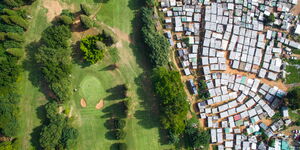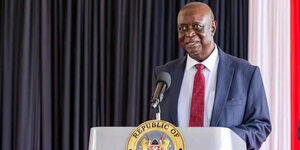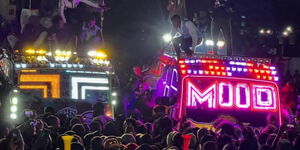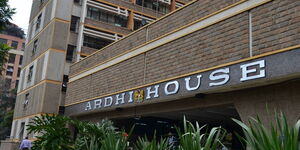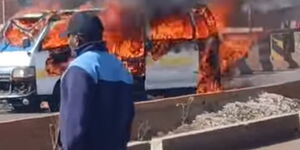The menace of students sneaking drugs and contraband in school has reportedly reached epidemic proportions.
The harsh reality is that students are always a step ahead of their teachers in inventing new ways of smuggling and concealing outlawed items in school.
Despite intense searches on reporting days, some students have managed to devise creative and sophisticated techniques to sneak whatever they want in schools.
This comes even as students complain that they are usually forced to strip naked as teachers search them in all manner of places just to make sure that they are ‘clean’.
In this article, we’ll highlight some of these methods and challenges that some teachers go through in trying to curb this problem.
Ways students are sneaking contraband in schools
1. According to a former secondary school board member John Ochanda Mbote, sneaking of contrabands into schools is sometimes facilitated by well-established cartels between students and workers.
“An elaborate chain of criminals sometimes work in cahoots with crooked support staff who smuggle the stuff in rolls of toilet paper, sugar, tins of cocoa and other unsuspecting items,” Mbote revealed.
He cited an incident where a gardener sneaked rolls of bhang and proceeded to open the light switches and the electricity wall sockets in the washrooms, hiding the drug inside and screw back the covers.
“We knew him as a very humble character above suspicion and nobody ever read any mischief. It was later discovered that he had developed a complicated code for communicating with the students who abused the drugs.
He would signal them when he had replenished supplies behind the wall sockets and switches,” he added.
2. In another instance, the school management came to learn about a fake mathematics teacher who was part of the drug peddling chain that distributed drugs to the school.
Upon investigations, the teacher, who was a favorite among the students, had forged academic papers and managed to get posted to the school.
It later emerged that the teacher was on a terror watch list after a new form one student was admitted and identified the fake teacher as a wanted man back in the village.
3. In some girls' schools, it is reported that the students usually exploit the fact that they can seek lawful redress if "searched inappropriately".
Even the most hawk-eyed teachers dread conducting searches on certain parts of female students as they do not want to get into problems.
They, therefore, use this 'protection' to stash phones and drugs inside their sanitary pads, bras, and pockets of their ‘bikers’.
4. In 2018, Former Moi Forces Academy principal Peter Warui revealed a shocking trick that some of the students used to smuggle drugs.
He disclosed that form four students hired a private car which they contributed to service, complete with a driver whom they used to source drugs and deliver to the students inside the school.
5. Some students pack substances such as inhalants in toothpaste tubes, making the tube look new so as to evade detection.
Others drill holes in bar soaps and pack marijuana rolls before sealing them.
6. Another technique that students use include carefully tucking unrolled tobacco, narcotics and prohibited tablets between pages of textbooks.
7. In many cases, contraband has been hidden in shoe soles, where creative students carve out a section of the shoe sole and ‘bury’ the contraband before they are smuggled into schools.
A teacher at one of the public boarding schools stated that they had discovered students sewing tablets, cigarettes or rolls of bhang in the hems of their clothes.
“Students abusing drugs have perfected the art of tearing a hole in the collar of the shirt or blouse and concealing the drugs there. Another favorite hiding place for drugs is in the hollow metal legs of chairs and desks with a stopper neatly holding everything inside. Sometimes students bring into schools chapatti and mandazi laced with narcotic substances,” the teacher disclosed.
8. He added that Some students dismantle mobile phones and distribute parts to their colleagues to sneak into the school as innocuous pieces of scrap.
"Once in the safety of dormitories, the phones are reassembled. Mobile phones are also wrapped in polythene papers and sunk inside tins of margarine especially on opening days.”
Nakuru county commissioner Erastus Mbui-Mwenda mentioned that a key way to check the inflow of contrabands and indiscipline in schools was to adopt an open-door policy that allowed students room for dialogue and ensure that their opinions are considered in the management of schools.
Mwenda suggested that structures be put in place so prefects are transformed into respected conveyors of information to the management.
He noted that the current set up makes prefects to be viewed as authoritarian and representatives of the administration.
“Many cases of indiscipline in schools are referred to Guidance and Counseling departments most of them being manned by teachers who are not professional counselors,
"The teachers lack expert knowledge in drug and substance abuse and the life skills offered aren’t examinable and so the teachers use them to cover the syllabus. Once trust is cultivated teachers and school managers will get timely information on contrabands and impending unrests,” Mwenda added.
He stated that some parents have contributed to crime and the unrests in schools because they "overprotect" their children when they are caught in deviant acts.
“We have to create avenues where students can articulate their issues and also keep tabs on potential trouble makers. Children today consume huge media content which influences the way they think and act. Parents must never abdicate their responsibilities,” he concluded.
According to media reports, there are plans to install CCTV cameras in all public schools to monitor students and members of staff.
A recent Ministry of Education report on school fires attributed the unrest in schools to drugs use by students.


